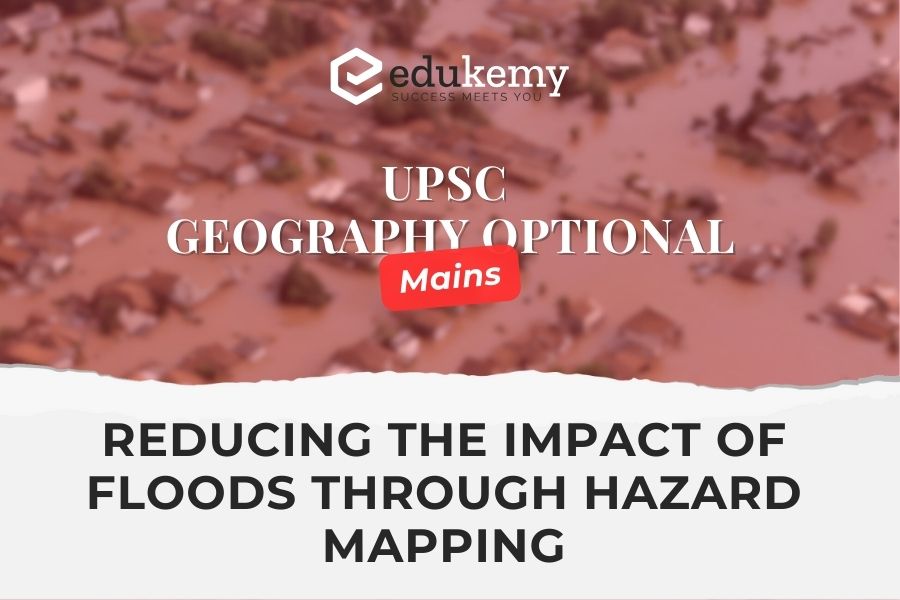
Explore the effectiveness of hazard mapping in mitigating the devastating impact of floods on communities and infrastructure. Hazard mapping, through the identification and assessment of flood-prone areas, enables proactive planning and risk management strategies. By understanding the spatial distribution of flood hazards, authorities can implement targeted measures such as land use planning, infrastructure development, and early warning systems. This proactive approach helps to minimize human and economic losses associated with flooding events. By prioritizing resources and implementing preventive measures in high-risk areas, hazard mapping serves as a valuable tool for reducing the vulnerability of communities to flood disasters. Delve into the role of hazard mapping in flood risk reduction, recognizing its significance in fostering resilience and sustainable development in flood-prone regions.
Contents
Answer:
Introduction:
Hazard mapping is a process of identifying, assessing, and illustrating the potential risks posed by natural hazards such as floods. It involves mapping out areas prone to flooding based on historical data, topographical features, and other relevant factors.
Body:
How Hazard Mapping is Done:
- Data Collection: Hazard mapping begins with gathering data on past flood events, topography, hydrology, land use, and infrastructure.
- Risk Assessment: Experts analyze the collected data to assess the probability and severity of flooding in different areas.
- Mapping and Visualization: Using Geographic Information Systems (GIS) and other tools, hazard maps are created to depict flood-prone zones, potential flood depths, evacuation routes, and vulnerable infrastructure.
Reducing Impact of Floods with Hazard Mapping:
- Early Warning Systems: Hazard mapping allows for the establishment of early warning systems, enabling timely evacuation and preparation, thus reducing casualties and property damage.
- Thailand’s Flood Forecasting and Warning System utilizes hazard maps to issue timely warnings, reducing casualties and property damage during floods.
- Infrastructure Planning: Authorities can use hazard maps to guide urban planning and infrastructure development, avoiding construction in flood-prone areas or implementing flood-resistant designs.
- After Hurricane Katrina, New Orleans used hazard maps to redesign levees and floodwalls, enhancing the city’s resilience to future flood events.
- Risk Communication: Hazard maps serve as valuable tools for communicating flood risks to communities, empowering residents to make informed decisions about their safety and property protection measures.
- The UK’s Environment Agency uses hazard maps to communicate flood risks to communities, aiding in informed decision-making regarding property protection and evacuation.
- Insurance and Financial Preparedness: Insurance companies can utilize hazard maps to assess flood risk and determine premiums, while governments can allocate resources more effectively for disaster response and recovery.
- Swiss Re, a reinsurance company, utilizes hazard maps to assess flood risk and calculate insurance premiums, ensuring financial preparedness for flood-related losses.
- Ecosystem-based Approaches: Hazard mapping encourages the preservation and restoration of natural floodplains and wetlands, which act as natural buffers against flooding, thereby mitigating its impacts.
- The Mekong River Commission employs hazard mapping to identify areas for wetland restoration, reducing flood risks for downstream communities.
- Community Engagement: By involving local communities in the hazard mapping process, stakeholders become more aware of flood risks and are more likely to participate in preparedness and mitigation efforts.
- In Bangladesh, hazard maps are used in community workshops to raise awareness about flood risks and encourage participation in preparedness activities such as building elevated shelters.
- Emergency Response Planning: Hazard maps inform emergency responders about areas most at risk during floods, enabling them to prioritize rescue and relief operations.
- The Mumbai Disaster Management Cell utilizes hazard maps to identify vulnerable areas and pre-position resources for efficient emergency response during monsoon floods.
- Investment Prioritization: Governments and organizations can prioritize investments in flood mitigation measures, such as levees, floodwalls, and drainage systems, based on hazard maps, maximizing the effectiveness of limited resources.
- The European Union’s Floods Directive uses hazard maps to prioritizefunding for flood risk management measures, such as river restoration projects and floodplain zoning.
Conclusion:
Embracing hazard mapping as a fundamental component of disaster risk reduction strategies can lead to more resilient communities and sustainable development in the face of increasing flood risks.
In case you still have your doubts, contact us on 9811333901.
For UPSC Prelims Resources, Click here
For Daily Updates and Study Material:
Join our Telegram Channel – Edukemy for IAS
- 1. Learn through Videos – here
- 2. Be Exam Ready by Practicing Daily MCQs – here
- 3. Daily Newsletter – Get all your Current Affairs Covered – here
- 4. Mains Answer Writing Practice – here

